AVRO Lancaster long range heavy bomber
The AVRO Lancaster Long Range heavy bomber was the mainstay of the RAF Bomber Command's fleet during the latter part of World War 2.The aviation company A.V.Roe & Co Ltd's founder Alliot Verdon Roe built his first plane in 1907. His company went on to build a range of fighters and bombers the last being the AVRO Vulcan jet nuclear deterrent bomber that saw active service in the Falkland Island war in the south Atlantic.
RAF Bomber Command wanted a new bomber to deliver larger bomb loads to targets at greater distances. The British Air Ministry circulated specification P13/36 for a twin engine medium bomber. Avro's successful design was given the name Manchester. The design used the Rolls-Royce Vulture 24-cylinder X-block engine, which was essentially two Rolls-Royce Peregrine Vee cylinder blocks mounted one on top of the other, the bottom one inverted to give the "X" shape The Manchester was a failure due to its under-developed, under-powered, and unreliable engines. The Manchester was designed with only twin tails. Due to lack of directional stability, it had a third central fin added.
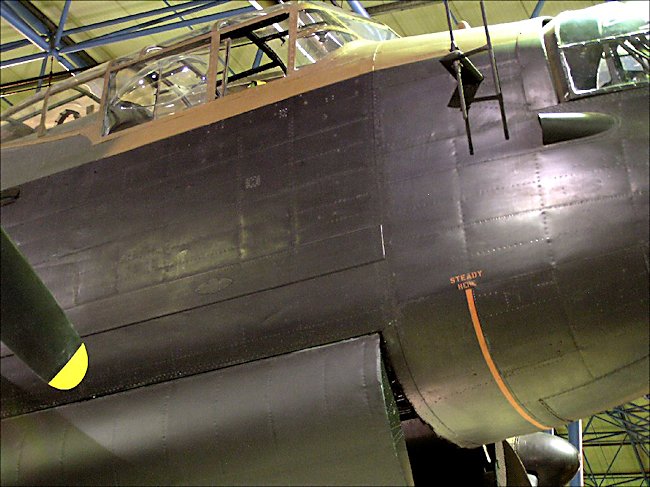
Photograph taken at the RAF Museum, Hendon, London NW9 5LL England
The Manchester entered RAF Bomber Command service with No. 207 Squadron in November 1940. It flew its first operational mission on the night of the 24th to 25th February 1941 in a raid on the French port of Brest and it's U-boat submarine pens. The 193 operational Manchesters flew 1,269 operations with Bomber Command, dropping 1,826 tons (1,657 tonnes) of bombs and losing 63 aircraft in action, flying its last operation against Bremen on 25 June 1942.[6] Of the 78 aircraft lost, 45 were non-operational losses of which 30 involved engine failure. In total 209 Manchesters entered service, before production finished in November 1941. Eight RAF bomber squadrons were equipped with Manchesters. They were also used by Coastal Command.
Avro's chief designer, Roy Chadwick worked on the Manchester, Mk III variant. It was a radical rethink on the original design. It first flew on 9 January 1941. Many design changes had been made to try and fix the faults of the early marks of the Manchester bomber. It was in reality the first Lancaster. It was powered by four Merlin engines and had an increased wingspan. Initially it retained the three fins and twin outboard rudders. The central fin had no movable control surface. It received the "Lancaster" name after its first flight when it proved to be a great improvement on the Mk I and MK II Manchester bomber. On the second prototype Lancaster the central rear fin was removed and a wider span tailplane and larger elliptical twin fins were used.
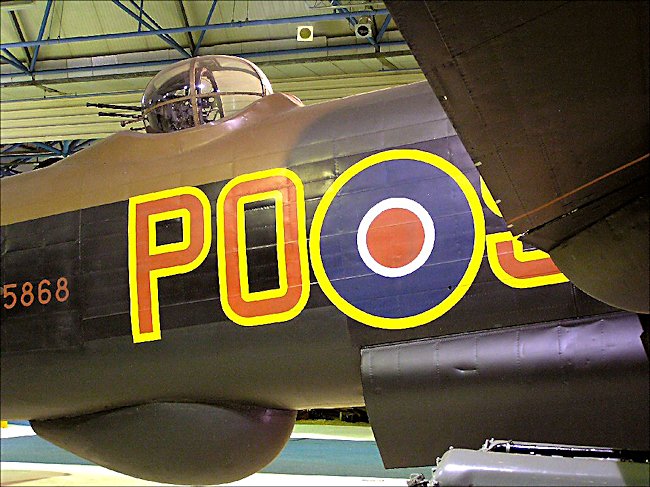
Photograph taken at the RAF Museum, Hendon, London NW9 5LL England
In the early years of the war the production of fighters was given priority and they also used the Merlin engines. Because of the lack of Merlin engines some of the "lancs" were produced with Bristol hercules engines. These were called Lancaster B Mrk II. Only 300 of these stop gap variants were made. The letter B stands for bomber. A total of 7,377 Lancasters of all marks were built throughout the duration of the war, each at a 1943 cost of £45-50,000
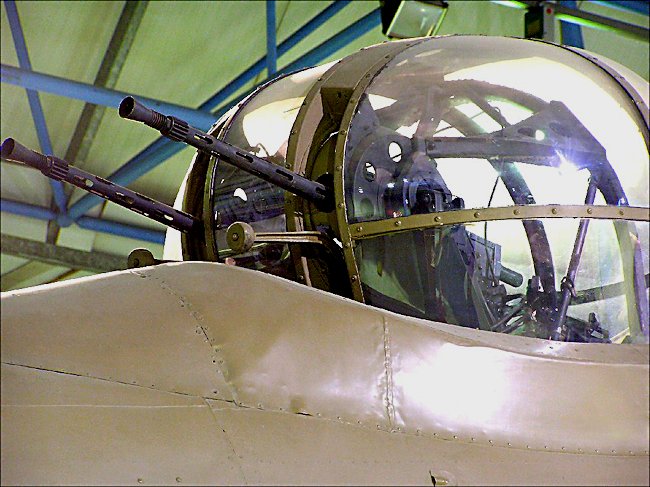
Photograph taken at the RAF Museum, Hendon, London NW9 5LL England
The Lancaster Night Heavy Bomber had a crew of seven this included a pilot, flight engineer, navigator, wireless operator, front gunner, mid-upper and rear gunner. The Lanc's armament comprised of eight .303 inch (7.7mm) Browning machine guns in three turrets. It had a maximum normal bomb load of 14,000 lb (6,300kg) or 22,000 lb Grand Slam with modifications to bomb bay. The Lancaster bomber had a maximum speed of 280mph at 15,00 feet (450km/h at 5,600m). It had a range of 3,000 miles (4,600km) and a service ceiling of 23,500 feet (8,160m). It was retired from service in 1963 but you can still see a Lancaster of the Battle of Britain Memorial Flight fly over the skies of Britain at airshows.

Photograph taken at the RAF Museum, Hendon, London NW9 5LL England
The first operational mission by the new Lancasters bombers was a mine laying operation on the night of 3/4 March 1942 by RAF 44 Squadron. Four Lancasters took part, led by Squadron Leader John Nettleton. He was awarded the Victoria Cross for his part in the first major sortie undertaken using the New Lancaster bombers. It was an attack on Augsburg on 17 April 1942. A joint expedition by 44 and 97 Squadrons. The target was submarine diesel engine works in southern Germany. The raid was at low level in broad daylight. Of the 12 Lancasters that took part in the raid, only 5 returned. RAF Bomber command soon realized that the losses were too high on day light missions. The switch was made to night bombing raids. You had more chance of being killed as aircrew of a WW2 bomber than being in the infantry. Out of every 100 aircrew only 13 would live to complete a tour of 50 operations.
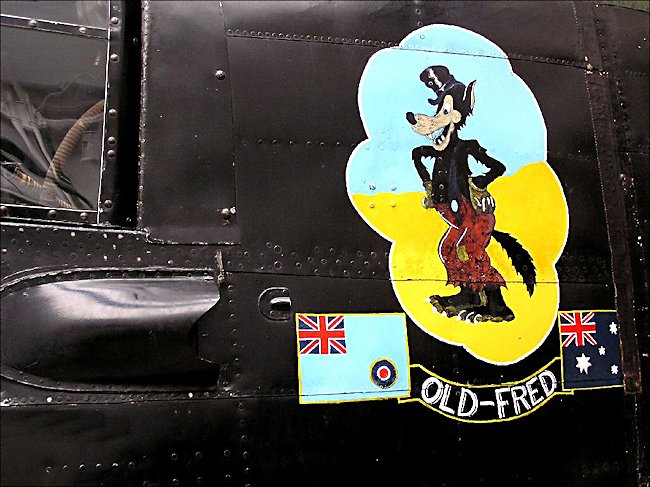
Photograph taken at the RAF Museum, Hendon, London NW9 5LL England
Most people with an interest in History and WW2 have heard of the Dam Busters raid immortalised in film. The bombing raid was in 1943, codenamed Operation Chastise. It was designed to destroy the dams of the Ruhr Valley and cause havoc by flooding this industrial area. The operation was carried out by 617 Squadron in modified Lancaster Mk IIIs carrying special drum shaped bouncing bombs designed by Barnes Wallis, the brilliant engineer who had designed the Wellington Medium Bomber. Another famouse raid also made into a film was the sinking of the Tirpitz. Lancaster attacks using Tallboy bombs against the formidable German battleship Tirpitz, first disabled and later sank the ship. After the war Lancasters were used during the Berlin Airlift to bring needed supplies to the cut off city at the beginning of the Cold war.
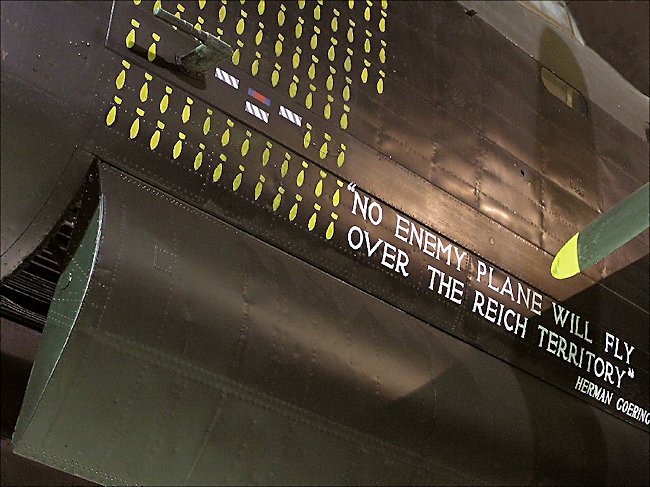
Photograph taken at the RAF Museum, Hendon, London NW9 5LL England
Lancaster Bomber books


Tweet